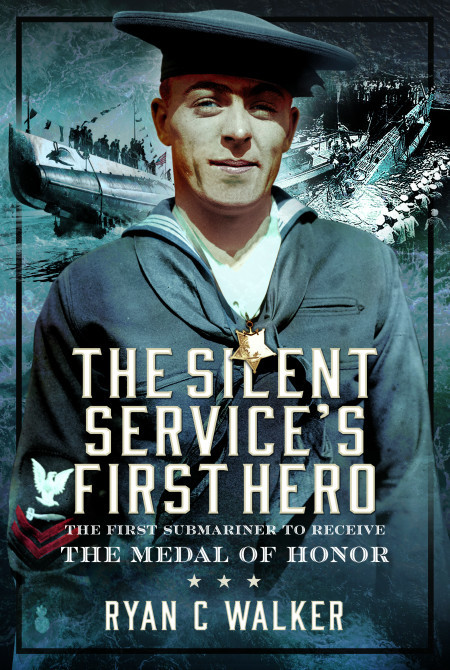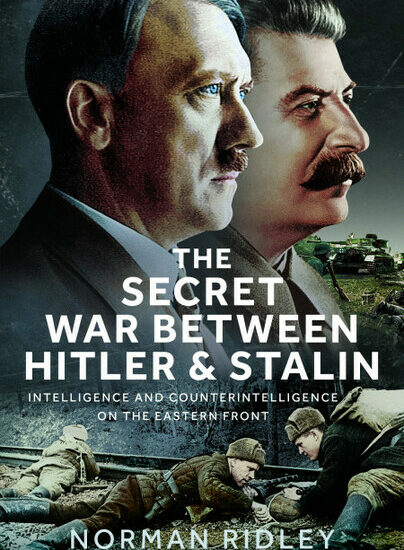Author Guest Post: Ryan C Walker
The Top Five Submarine Movies in Breault’s Lifetime
There is a frequent debate over what is the best submarine movie, one that often emphasizes relatively recent movies. World War 2 movies are sometimes cited, but movies prior to 1940 are rarely mentioned in popular lists, which is unfortunate as several of these are well worth watching, particularly from a historical perspective. Despite most of these movies being out for nearly a century, I will offer no spoilers in the event some have interest in enjoying the movie as a film, rather than
Most submarine movies revolve around operations, but my primary interest in watching these movies was understanding the public perception of submariners and how they saw them interact with local communities for TSSFH. Thus, my definition of a submarine movie was any movies that involves a submarine and its crew as a primary plot device, it does not have to centre on submarine operations to be a submarine film in this list.
There are numerous movies that fall under this that deserve deeper historical analysis, but simply cannot be included. One is Morgenrot, a Nazi submarine movie that carries propaganda as a primary plot point, therefore it carries an immediate disqualifier from my list, and any who wish to watch it must be aware that it was a propaganda film.
It’s Tough to Be Famous (1932) may be one of the best individual movies on the list, though it follows a fictional submariner (likely based on an amalgam between Henry Breault and Charles Lindbergh) for a brief period, primarily seeking to understand how he deals with his newfound fame. The main character is famous for his role on a submarine, but he leaves the service shortly after, making it tangential to the fame it provided him.
With that concluded, we move into the best submarine movies from 1915-40.
5. 20,000 Leagues Under the Sea (1916)

The shadow of World War I and the sinking of the Lusitania (along with numerous other merchant vessels) provide the backdrop for this American film. Breault was only 16 when this movie came out, a silent film cost $500,000 to produce, which explains why there was only one movie produced during Breault’s lifetime. Several scenes such as underwater exploration remind the audience that submarines can be used for peaceful purposes in addition to their uses in war, but I interpreted the final scenes as a message to the Germans to be wary of further campaigns of unrestricted submarine warfare.
This film is interesting, but difficult to watch from a non-historical perspective. Overall, it is an impactful film that came out from an American perspective during neutrality on the submarine, which indicates the idea of a submarine as a peaceful exploration tool had not diminished after the harsh experience of war. Another interesting point is the interpretation of Nemo as an Indian prince named Dakkar, highlighting American dislike of British colonialism in India.
4. Three Little Sew and Sews (1939)

The Three Stooges enlist in the USN as tailors and, as is their custom, fall into all sorts of shenanigans. The shortest depiction, this film follows in the tradition of Syd Chaplin’s The Submarine Pirate (1915) and Billy Dooley’s various films as a naïve, clumsy sailor (1925-38) utilizing the submarine as a tool for comedy. Several Three Stooges films from this period deal with the ongoing conflict in Europe that the USA was not yet involved with. The submarine in comedy is continued on in films such as Down Periscope (1996), and frequently relies upon absurd use of the environment and the antics of submariners themselves.
3. Submarine D-1 (1937)

The submarine as a tool in propaganda has been commented on, but this is the first film on the list that also explores the disabled submarine (DISSUB), a prominent theme in submarine films from this era. Breault himself survived a DISSUB when the O-5 sunk and the experience shaped his life profoundly. It seeks to inform and represent the submarine force prominently, particularly as recruitment began to step up.
The film follows three sailors two who are officers. One dies in a collision (similar to the S-51 or F-4, lost with all hands after a collision) one is a petty officer first class, freshly reporting the SUBSCOL New London and the other is a veteran submarine chief. The latter two seek the attention of the newlywed wife of the submariner who passed away. Both end up on the fictional D-1, and several submarine bases are shown in the period, including New London and San Diego. The film itself isn’t original, it relies on themes include a love triangle and submarine rescue using the Momsen lung and McCann rescue chamber, all from the same vessel that would save the Squalus two years later (the Falcon). This particular film is most notable as it follows three enlisted submariners and one officer. Submarine D-1 shows the training process to become a submariner.
2. Men Without Women (1930)

Another submarine DISSUB film, notable for its primary location in the Asiatic Theatre or the China Station. The first scenes include Shanghai, with the plot device being submariners recalled from their shore leave to get underway in adverse conditions. The opening scenes show sailors having a blast in their brief port call, singing songs, drinking, and visiting ladies of the night. Somewhat surprising is the depiction of alcohol in the middle of Prohibition.The men of the fictional submarine undergo the tense atmosphere and hardships of a DISSUB. Will they be rescued?
Again the DISSUB plays a major role in creating the tension of the submarine film. This is replaced in war movies with depth charging, but DISSUB circumstances were not uncommon in the Interwar Period. Americans were well aware of the dangers of submarining, and the DISSUB communicated that danger effectively. The scenes ashore are some of the most unique peaks into the perceptions of Asiatic sailors, those who had spent too much time in the Orient. I’m actually surprised this one wasn’t censored, as it portrays sailors drinking during Prohibition America.
1. Born to Dance (1936)

The best submarine movie is about… tap dancing? Yes. Born to Dance follows three submariners from a freshly returned submarine, each with their own ideas of what returning home should look like. Eleanor Powell as Norma Paige is the lead, but James Stewart as Chief Ted Barker is a complementary protagonist, and the movie allows for both to have equal screentime. The comedy relies on situational and comedic relationships.
The burden of an overseas deployment is explored in the Sak’s marriage and Buddy Ebsen plays the free-wheeling aspiring actor but current TM, Mush Tracy. The emphasis on the relationships is what makes this movie phenomenal. The Art Deco background, the connection of sea to shore, the internal struggle between a sailor and their desire to find a home really bring the period to life. For those who enjoy a good musical, I have shared this one with my wife who thoroughly enjoyed it.
I will go so far as to say, Born to Dance is the best submarine movie of all time, as it focuses on the people, rather than the machine, and gives a potential glimpse into the idealized sentiment of the 30s, one that is often forgotten under the weight of the Great Depression narrative.

Conclusion
There are several movies that are worth exploring for the scholar interested in the submarine film, but perhaps most surprising is the submarine outside of war primarily followed enlisted submariners and placed them in primary positions in the narrative. No movie exclusively emphasizes a commanding officer. For many of the movies that do seek to understand the submarine as a war machine, they primarily emphasize the DISSUB as the climactic narrative tool, something that would be replaced by the Depth Charge Experience as time went on.
I hope that this has inspired some to revisit much older movies to expand their best submarine movies of all time lists. For scholars like myself, these movies provide an insight into the discussions of the period, what they were concerned about, and how they understood certain signs in their context. I hope these movies provide some insight into the tradition of the submarine movie.
………………………………………………………………

The Silent Service’s First Hero will be released this year.

